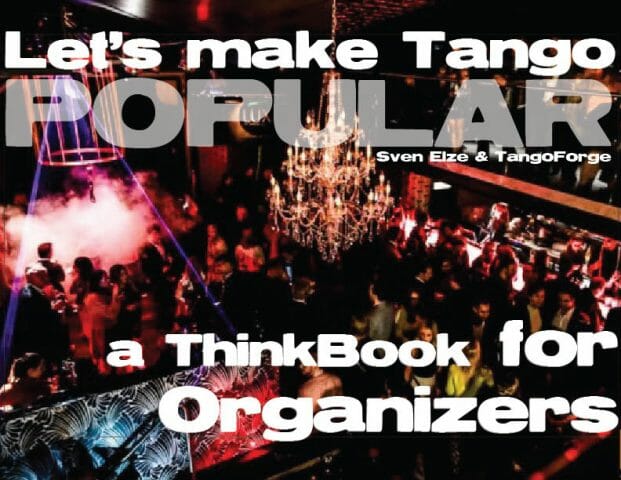I’ve had media training. I knew to write my talking points (on the train).
Staying on your Talking Points
 Then, I broke the most important rule. Don’t say anything other than your talking points –even if it means ignoring the question and repeating yourself– because if you do, that’s what they’ll use.
Then, I broke the most important rule. Don’t say anything other than your talking points –even if it means ignoring the question and repeating yourself– because if you do, that’s what they’ll use.
And that’s exactly how it went down. I delivered my talking points, eloquently. Then I answered other questions. From a 15 minute interview, not one of my talking points made it to the aired show.
Vio’s Talking Points
- Argentine Tango is a technique for improvised partner dance. It’s the most sophisticated technique that exists for this. We can communicate direction, speed, dynamic, intensity.
- The experience of concentration required is profound and exhilarating and takes people to the psychological state of Flow.
- This dance can be used to express any music. The best way to think about it is like French cooking technique. You need to learn and train it, but then you can use it to express a lot of different culinary ideas, to enhance and develop any cuisine. Your national treasure, Magnus Nilsson, studied French cooking and uses that technique to express new ideas about Swedish traditions and ingredients.
Since the people who wrote the press release had advertised my avant-garde approach to tango, I was prepared to speak about what makes my tango different.
- [How are you different from other tango professionals?] What’s unfortunate is that some people attach this technique to only one genre of music – and that’s a music that many people don’t relate to. I believe people should use tango technique to dance to their own music. You can dance tango in Shanghai and Istanbul, but they are going to play the same old Argentine music as Buenos Aires, San Francisco, and Berlin. That’s like saying the only good food is French food.
- The other unfortunate thing is that people attach tango to a very specific gender performance. That is helpful for men. It helps them to learn the difference between strength and violence, but when this fantasy goes too far, it leads to some old and painful gender relations. so my work with tango is to take this incredible technique and keep the focus on creativity and expression. After all, this dance was invented by African slaves. It’s a cultural art of liberation. I try to explore the connections with jazz, blues, capoiera, hiphop and other diasporic practices – people drawing on cultural elements to express themselves and find freedom.
Final/aired Cut:
Tango gave me back my humanity because I was able to dance with people who I disagree with politically.
When I started dancing, I was inspired by women in their 90s putting on their high heels and sexy dresses every week.
So… Tango is an opportunity to dance with old ladies and hug a nazi? And you have to wear high heels… What an advertisement!
Getting off your [old] Story
Although story and personalism is hot for promotion now, my number one rule for how to promote tango may run counter to a lot of marketing advice: Stop Talking About Yourself!
Why? Because most of us who have stuck with tango for a long time are not typical. Our stories will not resonate with many others. Telling our own stories has already obviously failed. We need to find aspects of tango which will resonate with a much broader audience.
The personal stories I told (about recovering from the isolation of my academic career and finding some interesting role models for femininity) are beautiful and relevant when sharing my personal history, with friends. But they are NOT good advertisements!
And there are other stories, equally true for me, which would resonate with more people:
- I’ve been an athlete my whole life and tango is one of the most challenging sports I’ve done because it demands so much muscle control.
- I love to dance, and it’s so great to be able to dance with a partner with a high level of precision and expressiveness.
- I like to travel, and tango enables me to meet local people in a safe and meaningful way in any major city of the world.
- I don’t really like small talk, and tango is a way that I can connect to people without chit-chat.
In January, I had the chance to visit my home, California, and to reflect on some of the stories I’d become stuck in. Sitting at Squaw Valley staring at the mountain where I spent my teenage years, I realized I’d been telling the wrong story. If you’d asked me about my amateur ski racing career last year I would have said “yeah, I wasn’t good enough.” This year I have a new story:
When I was training as a ski racer I learned to keep working through intense physical pain in order to achieve the things I wanted. As a child, all that equipment was heavy, and we had to do a lot of uphill and sideways work in it. I learned to keep going even when it felt impossible to move, and when my muscles were screaming. This perspective on pain has enabled me to continue through many difficult circumstances in my life to manifest my intentions and goals.
No less true than the first story, but a lot more useful.














